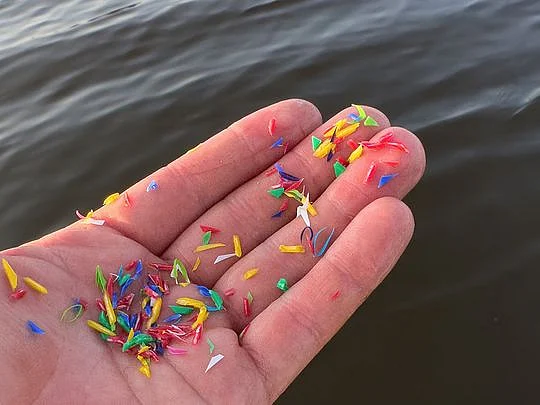In the clear, glistening waters of our oceans and rivers, an invisible threat lurks — tiny particles so small they evade the naked eye yet pose monumental challenges to ecosystems, human health, and the global environment. Microplastics, pieces of plastic less than five millimetres in size, are emerging as one of the most pressing environmental crises of our time.
Once hailed as the material of the future, plastic has transformed industries and improved countless aspects of daily life. However, its durability — once a strength — has become an ecological nightmare.
Over decades, large plastic debris, from discarded bottles to fishing nets, fragments into smaller particles due to weathering, ultraviolet radiation, and mechanical forces.
These fragments, along with microbeads from cosmetics and synthetic fibres shed from textiles, accumulate in terrestrial, aquatic, and atmospheric environments, creating a persistent, ubiquitous problem.
Each year, humanity produces over 400 million metric tons of plastic, with a staggering 14 million metric tons finding their way into oceans. Microplastics have infiltrated the most remote corners of the planet, from the depths of the Mariana Trench to the peaks of Mount Everest. Alarmingly, studies reveal that humans consume and inhale an estimated 74,000 microplastic particles annually.
More than inert particles microplastics are Trojan horses carrying toxic chemicals such as phthalates, bisphenol A (BPA), and heavy metals. Once inside the body, they can trigger inflammation, disrupt hormonal systems, and impair reproductive health. Recent studies even suggest that microplastics may cross the blood-brain barrier or settle in vital organs, posing unprecedented risks to human health.
Furthermore, the airborne particles of microplastics pose a growing concern. Inhaling these pollutants can damage respiratory systems and exacerbate conditions such as asthma and bronchitis. The true extent of their impact on long-term human health remains under investigation, but early findings underscore the urgency of addressing this silent invader.
Aquatic ecosystems suffer immensely, with these pollutants altering water quality, affecting photosynthesis in phytoplankton, and disrupting breeding patterns in marine species.
Birds, mammals, and even microscopic organisms like plankton face the repercussions of microplastic ingestion, leading to imbalances in biodiversity and ecosystem health.
In agricultural settings, microplastics in soil disrupt nutrient cycles, affecting crop productivity and quality. Waste water irrigation, compost application, and plastic mulch have become major conduits for microplastics entering farmlands, raising concerns about food security and contamination.
Over the years local and grass roots initiatives have gained traction. Community cleanup drives, educational campaigns, and stricter regulations on single-use plastics are empowering individuals to play a role in reducing plastic waste. However, the fight against microplastics cannot succeed without the collective will of corporations, policymakers, and individuals.
While systemic changes are essential, individual actions remain a powerful tool for change. Opt for reusable alternatives to single-use plastics, support brands committed to sustainable practices, and educate others about the dangers of microplastics.
Microplastics may be small, but their implications are immense. They serve as a reminder of humanity’s unsustainable relationship with plastic and the urgent need for a paradigm shift.
It is time to rethink, redesign, and revolutionise how we produce, consume, and dispose of plastics. Only then can we stem the tide of microplastics and secure a healthier, more sustainable future for generations to come.
Maram Saleh, a Bahraini law student, finds inspiration in the realms of research and writing
Sign up for the Daily Briefing
Get the latest news and updates straight to your inbox
Network Links
GN StoreDownload our app
© Al Nisr Publishing LLC 2026. All rights reserved.
